Everything You Need to Know About - Mother of Millions
Updated: March 19, 2025

L et's embark on a journey through the enchanting realm of the Mother of Millions plant, where botanical wonders unfold at every turn.
Imagine a succulent plant that possesses an extraordinary ability to multiply itself effortlessly. Enter the world of Kalanchoe delagoensis or Chandelier plant, which is also known as the Mother of Million plants.
The reasoning behind the name of the succulent is the plant's capacity for mass reproduction. The teeth-like structures along the leaf edges form numerous plantlets or embryoids. This rapid-growing plant multiplies quickly, and the plantlets can grow almost anywhere they fall.
The seeds can also survive for years. Even if the plant is pulled out, the seeds stay underneath the surface. This drought-resistant plant grows relentlessly through all seasons. It is not susceptible to many diseases except mildew infection. This is why it is also known to be an invasive weed - it quickly spreads over an area, stifling other nearby plants' growth.
The other names for the plant are Bryophyllum tubiflorum, Kalanchoe verticillate, Bryophyllum verticillatum, Bryophyllum delagoense, Devil's Backbone, Alligator Plant, Kalanchoe tubiflora, Mexican Hat Plant, and Kalanchoe tubiflora.
This invasive species Mother of Millions is native to Madagascar and naturalized in Tanzania and Uganda too.

BUY NOW AT PLANET DESERT/ Details
In this comprehensive guide from Planet Desert, we'll cover everything you need to know about Kalanchoe delagoensis - (also known as the plant Chandelier) - from its sun exposure needs to how to propagate it by cuttings and more. So, hop on over, and let's get started!
Kalanchoe Mother of Millions Appearance
The succulent grows erect to a height of 6 feet or more. Its thick, fleshy, thin, narrow leaves grow in a rosette formation, creating a striking visual display. These leaves are a vibrant shade of green, with scalloped edges that add a touch of whimsy to their appearance.
- The Kalanchoe delagoensis is truly unique for the tiny plantlets that adorn its leaves.
- The teeth-like structures along the leaf edges form numerous plantlets or embryoids.
- This rapid-growing plant multiplies quickly, and the plantlets can grow almost anywhere they fall.
- These plantlets, also known as "baby plants," grow along the edges of the mother plant's leaves, like little green pearls clinging to a necklace. They're like miniature versions of the parent plant, complete with their own roots and leaves.
- The leaves are tubular-like and fleshy, growing on a single stem.
- Additionally, these are primarily green, adorned with intriguing reddish-brown spots.
Overall, the Mother of Millions succulent is a fast-growing plant. This succulent does not need any special maintenance or care. It's quite a sight to see!
Mother of Millions Flowers
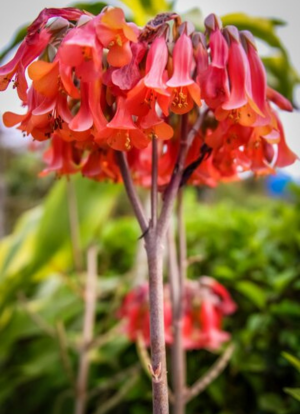
The Mother of Millions flowers are bell-shaped and vividly colorful. These bell-shaped flowers do not have any fragrance, and they grow at the top, forming circular clusters.
The flowers droop and each bloom has an individual stalk. The color of the flower ranges from dark reddish-orange to pale pink, which resembles the dangling crystals of a chandelier.
When the Mother of Millions is in bloom, these lovely flowers create a striking contrast against the plant's fleshy, green leaves.
The blooming period of the Mother of Millions' flowers typically occurs during the early spring and summer months, although it can vary depending on the specific growing conditions.
The flowers can last for several weeks, adding a burst of color and beauty to your indoor or outdoor garden.
Remember, to encourage blooming, provide bright light, protect from harsh sunlight, and use succulent fertilizer. Trim off flowers when they fade.
The flowers attract pollinators such as bees, hummingbirds, and butterflies, who are drawn to their sweet nectar. It's a delightful sight to see these winged visitors fluttering around the plant, spreading pollen from flower to flower.
 Butterflies
Butterflies
 Bees
Bees
 Hummingbirds
Hummingbirds
 Lady Bugs
Lady Bugs
 Multi Pollinators
Multi Pollinators
 Other Birds
Other Birds
Kalanchoe Delagoensis Mother of Millions Plant Care
Growing these plants is easy because of their self-care and self-propagation. Here are quick guidelines to help start.
Kalanchoe delagoensis loves bright light and well-draining soil. This drought-resistant plant grows relentlessly through all seasons. It is not susceptible to many diseases except mildew infection. This is why it is also known to be an invasive weed - it quickly spreads over an area, stifling other nearby plants' growth. Water it when the soil is dry but be careful not to overwater. Now, let's dive into the detailed description of the Mother of Millions care!
Quick Reference

Bloom Season

Flower Color

Growth Rate
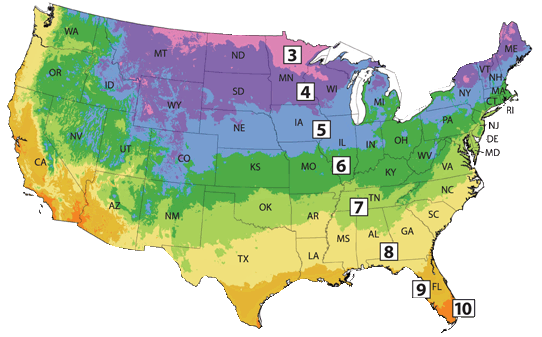
Hardiness Zone
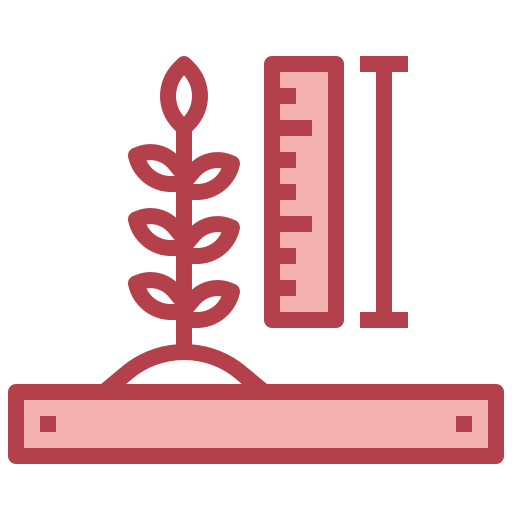
Mature Size
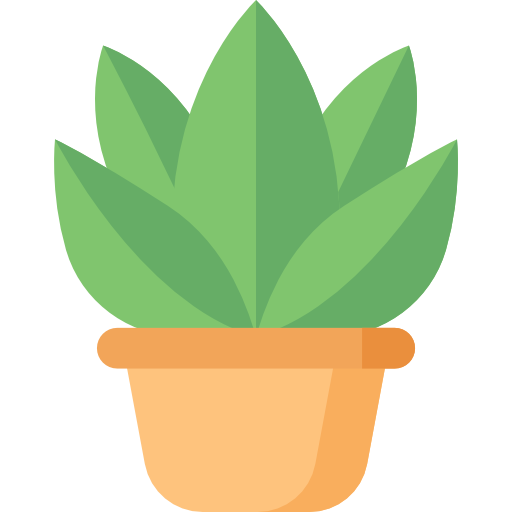
Plant Type

Sun Exposure

Toxicity

Watering Needs
Mother of Millions Watering Needs
The drought-tolerant Mother of Million plants has its own preferences when it comes to hydration.
This succulent is adapted to survive in arid conditions, so it can handle periods of drought. Hence, less water is good for the plant.
When you do water Kalanchoe delagoensis, make sure to give it a good soak, allowing the water to penetrate the soil.
The Mother of Millions likes to be watered when the soil is dry. But remember, never overwater the plant. It's best to let the soil dry out between waterings to prevent any issues like root rot.
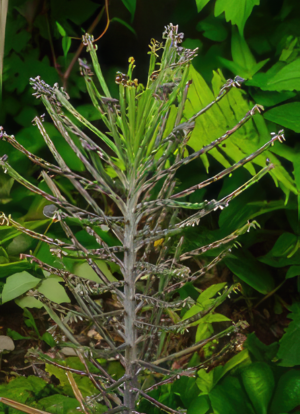
Also, the roots should never be left standing in excess water. The overwatering side effects include drooping leaves and premature growth of young plantlets.
Ensure to water it every week, at least once from spring to fall. Like other succulents, Mother of Millions in the Kalanchoe genus may go dormant during the summer months. As late winter sets in, reduce the watering frequency. Always make sure that the Kalanchoe delagoensis plant is left to dry completely before you water it again. So, a moderate watering approach is key for this lovely succulent.
Mother of Millions Lighting Needs
If you are growing your beautiful Millions plants indoors as a houseplant, find a spot near a window where it can receive bright, filtered light throughout the day.
When growing outdoors, the Mother of Millions plant loves bright sunlight though it may not bear the brunt of the midday sun. However, it needs to be protected from the direct sun rays.
If you notice that your Mother of Millions plant starts to have leggy growth with the leaves paling, it means it needs extra light or it is getting too little light. On the other hand, if the leaves start turning brown or scorched, they might be getting too much direct sunlight.
Remember, finding the right balance is key! Give your Mother of Millions the perfect amount of light, and it'll reward you with its beautiful, cascading growth.
Mother of Millions Optimal Soil & Fertilizer
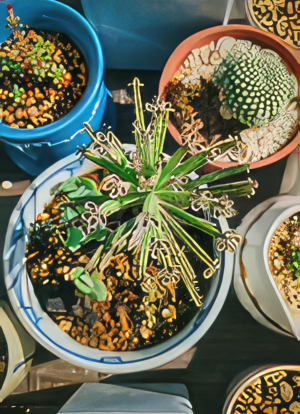
When it comes to the soil and fertilizer needs, this hardy plant is not very picky! Like all other succulents, the Mother of Millions needs well-drained soil. If in a pot, the succulent plant should be repotted every second year.
Use a well-drained specialty soil mix, as this type of potting soil mix has been precisely developed to imitate well-drained desert soils.
Commercial succulent soil is affordable and accessible online. Here at Planet Desert, we have a specialty-formulated succulent potting mix that contains 5 natural substrates and organic mycorrhizae to promote the development of a strong root system that helps your succulent to thrive.
An okay alternative is to make your own soil at home, that is if you don't mind getting a bit of dirt on your hands and you are okay with a mediocre soil mix. If so, simply combine healthy natural garden soil with equal parts of sand or perlite.
As for fertilization, the Mother of Millions doesn't require frequent feeding. The Mother of Millions succulent requires a once-a-year top feed in the spring, with balanced NPK fertilizers (5-10-5). Avoid the same during winter. Be sure to follow the instructions on the fertilizer packaging to avoid overfeeding your potted plants.
Mother of Millions Ideal Temperature & Humidity
When growing indoors as a houseplant, the ideal temperature for the plant is 60 to 85°F (mild frost), and can't handle below 50 F. It can tolerate slightly cooler temperatures, but it's important to avoid extreme cold or frost, as it can damage the plant.

In the United States, this is mostly an indoor plant, but if you live in southern Florida or Hawaii, then you can cultivate it outdoors in USDA zones 9-11.
If you live in a colder zone, it's best to keep the plant indoors or provide protection during the colder months.
When it comes to humidity, the Mother of Millions is quite adaptable. It can handle a range of humidity levels, but it generally prefers average indoor humidity. If you live in a particularly dry climate, you can increase humidity by placing a tray filled with water near the plant or using a humidifier.
Remember, providing the right temperature and protecting the Mother of Millions from extreme cold will help it thrive and showcase its unique beauty!
Mother of Millions Pruning
When it comes to pruning the Mother of Millions, it's best to do it sparingly. You can trim off any dead or damaged leaves to keep the plant looking tidy. If you notice any leggy or elongated stems, you can also trim them back to encourage bushier growth.
However, be cautious when handling the Mother of Millions, as it produces tiny plantlets along the edges of its leaves. These plantlets have the potential to grow into new plants if they fall onto the soil. So, make sure to collect and dispose of any trimmed leaves and plantlets properly to prevent unwanted propagation.
Remember, a light touch with pruning will help maintain the Mother of Millions' natural beauty while keeping it healthy and compact!

Mother of Millions - BUY NOW at PLANET DESERT
Potting & Repotting of Mother of Millions
Chandelier plants thrive in pots, providing indoor enjoyment and controlling outdoor spread. Repotting is minimal, typically once every year or two, depending on growth. A mix of cactus potting soil and perlite works well.
It is best to repot it in the spring or summer after the plant has finished blooming if it has bloomed at all. When repotting, gently remove the plant from its current pot and carefully loosen the roots. Place it in a slightly larger pot with fresh soil, ensuring that the top of the root ball is level with the rim of the terracotta pot with drainage holes. Avoid burying the stem too deeply, as it can lead to rot.
After repotting, water the plant lightly and allow the soil to dry out before watering again. This will help prevent overwatering and promote healthy root growth. Remember, repotting is typically done every 1-2 years or when the plant has outgrown its current pot!
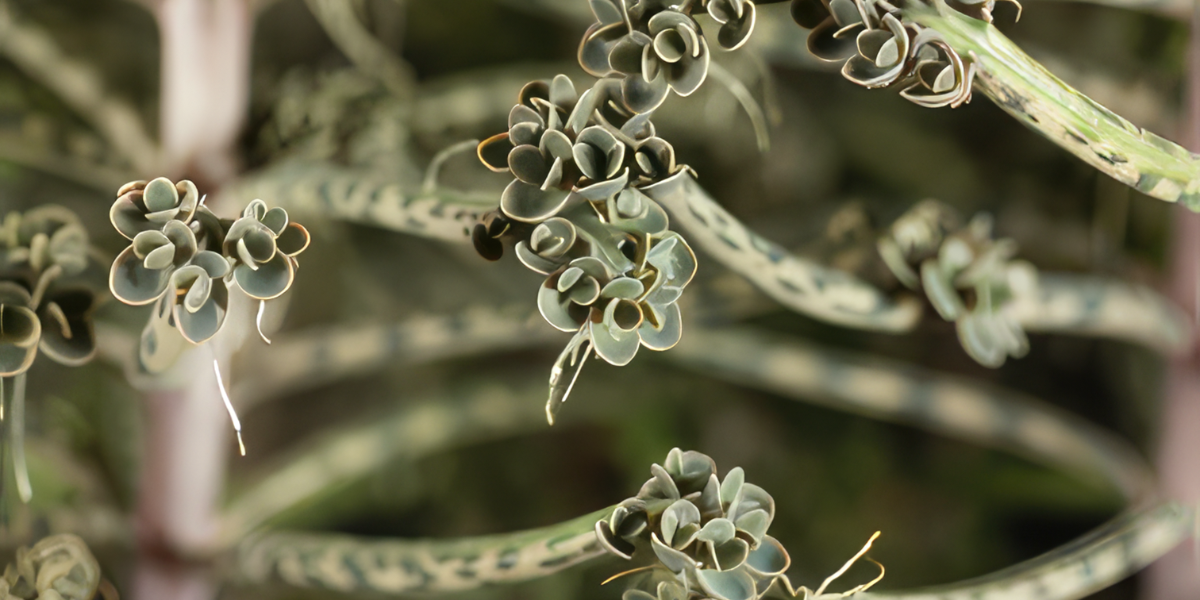
Overwintering
During the winter months, it's important to provide the Kalanchoe delagoensis plant with the right conditions to ensure its survival.
- First, it's crucial to protect the Mother of Millions from frost and cold temperatures. This plant is native to warm climates, so it's not cold hardy. If you live in an area with freezing temperatures, it's best to bring the plant indoors. Place it in a well-lit area near a window where it can receive sufficient sunlight.
- Secondly, adjust your watering routine during the winter. The Mother of Millions goes through a period of dormancy during this time, so it requires less water. Allow the soil to dry between waterings to avoid overwatering and root rot. Be careful not to let the plant sit in standing water, as this can also lead to root issues.
By providing protection from the cold and adjusting your watering schedule, you can successfully overwinter the Kalanchoe delagoensis and ensure its health and vitality!
How to Propagate Kalanchoe Mother of Millions?
The propagation of the Kalanchoe delagoensis is quite fascinating and unique. One of the most common methods is through the plantlets that grow along the tips of the leaf. These plantlets are like little babies ready to start their own journey. To propagate them, gently separate the plantlets from the mother plant by carefully detaching them from the leaf edges. Make sure each plantlet has some roots attached.
Once you have your plantlets, you can choose to either plant them directly in well-draining soil or place them in a container with water. If you opt for water propagation, fill a container with clean water and place the plantlets in it, making sure the roots are submerged. Change the water regularly to prevent stagnation and promote healthy growth.
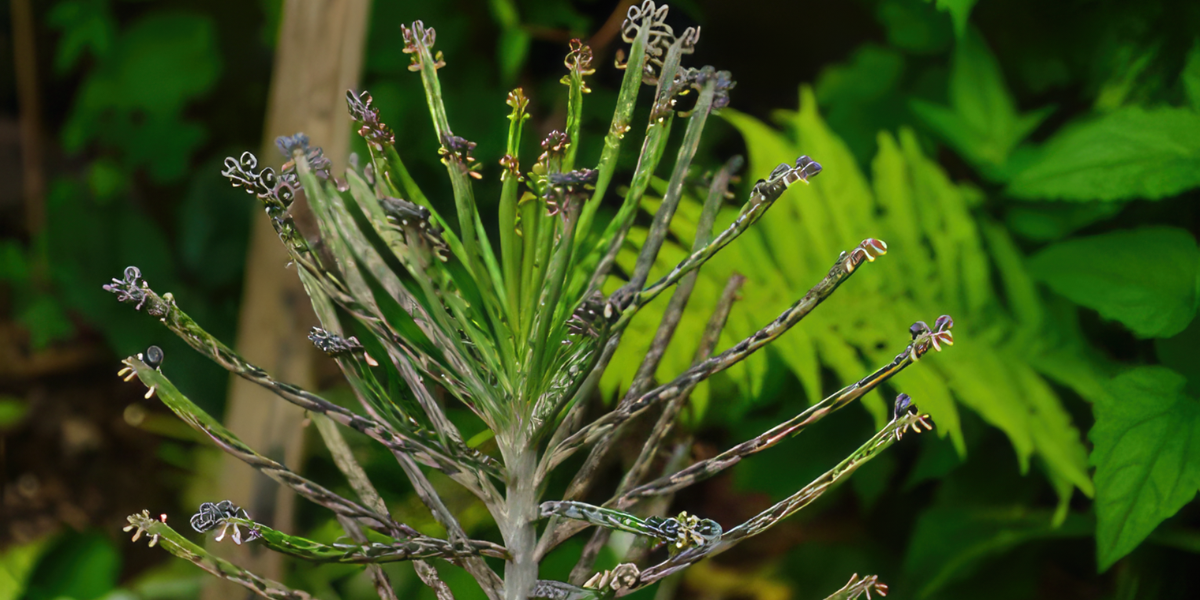
In a few weeks, you'll start to see new roots forming on the plantlets. This is a sign that they are ready to be transferred to the soil if you haven't already done so. Choose a well-drained potting mix and gently plant the little plantlets, ensuring the roots are covered but the leaves remain above the soil. Keep the soil slightly moist but not overly saturated.
Overall, the Mother of Millions propagation can be easily done by stem cuttings or the offshoots developed at the tip of the leaf. The baby plants fall off the chandelier plant and catch roots wherever they fall. With proper care and patience, your propagated Mother of Millions plantlets will develop into beautiful, independent plants. It's a rewarding process that allows you to expand your collection and share the joy of these unique succulent plants with others!
Mother of thousands vs. Mother of millions, both have many similarities, but also certain differences. You can learn more about the Mother of millions vs. thousands difference below.
Mother of Thousands Vs. Mother of Millions
Pests & Common Problems of Mothers of Millions
These resilient Mother of Millions plants or chandelier plant rarely encounter difficulties. It is not susceptible to many diseases except mildew infection. This is why it is also known to be an invasive weed - it quickly spreads over an area, stifling other nearby plants' growth. However, certain problems could emerge in specific situations.
Powdery Mildew: Powdery mildew is a white and moldy disease that can be caused by poor air circulation and humidity. To remove it without damaging the plant, dissolve one tablespoon of baking soda into a gallon of water and wash the plant with a baking soda mixture.
Root rot: Overwatering or poorly draining soil can lead to root rot, causing the roots to become mushy and black stems. To prevent this, make sure the soil is well-drained and allow the top inch of soil to dry out before watering again.
Leaf drop: Excessive watering or low light conditions can cause the Mother of Millions to drop its leaves. Ensure that the plant receives adequate light and water only when the top inch of soil is dry.
Leggy growth: Insufficient light can cause the plant to become leggy, with elongated stems and sparse foliage. Provide the chandelier plant with bright, indirect light to promote compact and healthy growth.
Remember, prevention is key! Regularly inspect your plant for signs of pests or problems and provide it with the right conditions to thrive.
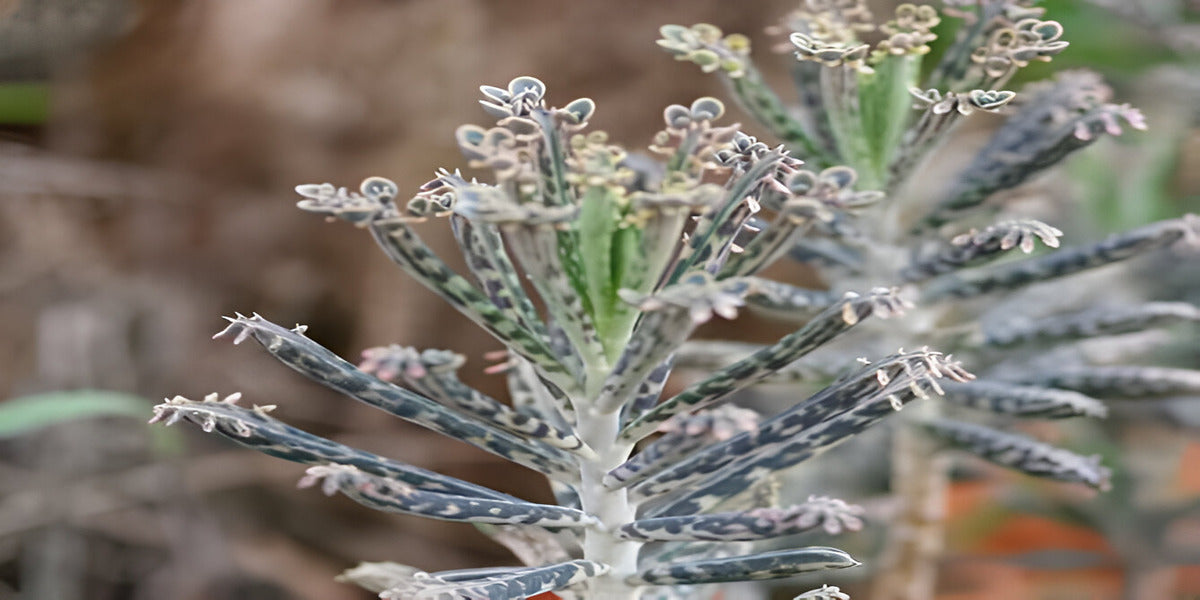
Word of Caution or Toxicity:
Mother of millions or Chandelier plant is a toxic succulent. Several cattle or livestock deaths have been reported in Australia. The flowers are known to be more poisonous than the leaves and stems. It is best to keep your pets and kids out of bounds of this succulent. The best possible use of the plant is to grow it as an aesthetic addition to your space, especially outdoors. Some native tribes in India, especially Kerala, are known to use this species of Kalanchoe to treat cancer symptoms.
Mother of Millions is Considered an Invasive Species
The mother of millions is considered an invasive species because it is not native to the ecosystems where it is found. It has been introduced to new areas and lacks natural predators or controls, allowing it to spread rapidly and outcompete native plants for resources. Its ability to produce numerous plantlets that easily detach and grow into new plants contributes to its invasive nature.
Where to buy Kalanchoe mother of millions plant?
When it comes to buying Mother of millions, you might be able to find them only at at nurseries or garden centers in your area that specializes in succulents. Planet Desert is the best option if you're seeking the easiest way to get succulents online and have them conveniently shipped right to your door!
Here at Planet Desert, we have a large selection of over 500 cacti and succulents in stock and guarantee they will arrive happy and healthy. So, order a Mother of millions (Kalanchoe delagoensis) now, or just explore all our other succulents on this site. You can also try searching online for “Mother of millions near me’ shops or florists that offer Mother of millions for sale.
Growers Reference Guide - Mother of Millions
| Bloom Season | Winter |
|---|---|
| Botanical Name | Kalanchoe delagoensis |
| Common Name | Mother of Millions |
| Dormancy | Summer |
| Family | Crassulaceae |
| Flower Color | Coral pink |
| Genus | Kalanchoe |
| Growth Habit | Multibranched |
| Growth Rate | Fast |
| Hardiness Zone | 9--10--11 |
| Mature Size | 3.3 feet |
| Native Area | Madagascar |
| Plant Type | Succulent |
| Propagation | Stem cuttings--offshoot |
| Resistance | Drought tolerant--heat tolerant--pest resistant |
| Soil PH | 6.5--Acidic--Neutral |
| Soil Type | Specialized succulent potting mix |
| Special Features | Unique foliage--easy to grow |
| Sun Exposure | Partial sunlight |
| Toxicity | Mildly toxic to humans, mildly toxic to pets |
| Watering Needs | Low |
The Bottom Line
The Mother of Millions, also known as the Kalanchoe delagoensis, is a unique and eye-catching succulent plant. It's called the Mother of Millions because it produces tiny plantlets along the edges of its leaves, giving it a striking appearance. This plant is popular among plant enthusiasts and collectors because of its ability to reproduce easily. Its low maintenance requirements make it a great choice for both beginner and experienced plant owners. These are quite hardy succulents that are suitable for beginners to grow in the garden and as houseplants. Their growth rate is slow and these mother of millions tend to last for many years.
Frequently Asked Questions
The Mother of Millions gets its name because it produces tiny plantlets along the edges of its leaves. These plantlets can easily drop off and root themselves, giving rise to new plants.
It's like the plant is a "mother" producing "millions" of offspring. It's a fascinating adaptation that allows the plant to spread and reproduce.
The main difference between the Mother of Thousands and the Mother of Millions is in the way they reproduce. While both plants produce plantlets along the edges of their leaves, the Mother of Thousands (Kalanchoe laetivirens) typically produces fewer plantlets compared to the Mother of Millions (Kalanchoe delagoensis).
The Mother of Thousands usually produces around 2-4 plantlets per leaf, whereas the Mother of Millions can produce a larger number, hence the name. However, both plants have a similar reproductive strategy and can quickly spread and form new plants through these plantlets. They are both fascinating plants to have in your collection!
Yes, the Mother of Millions (Kalanchoe delagoensis) is considered toxic to cats. It contains compounds that can be harmful if ingested by cats. It's important to keep your furry friends away from this plant to ensure their safety.
If you have any concerns about your cat's health, you should always seek the advice of a veterinarian.
Yes, the Mother of Millions (Kalanchoe delagoensis) can be grown as an indoor plant. It thrives in bright, indirect light and can be kept indoors as long as it receives enough light.
Just make sure to place it near a window or provide supplemental grow lights to ensure it gets the light it needs. Indoor conditions can be suitable for the Mother of Millions, but it's always a good idea to monitor the plant's health and adjust its care accordingly.
The Mother of Millions (Kalanchoe delagoensis) is primarily grown as an ornamental plant. Its unique growth habit and the production of numerous plantlets make it an interesting addition to indoor or outdoor gardens.
Some people also appreciate its ability to tolerate dry conditions and low maintenance requirements. However, it's important to note that the Mother of Millions is considered invasive in some regions, so it's not recommended to plant it in areas where it could escape cultivation and become a problem. Overall, it's a visually appealing plant that can add a touch of greenery to your space!
The Chandelier Plant, also known as Kalanchoe delagoensis or Mother of Thousands, is a fascinating succulent that requires minimal care. It thrives in full sun to partial shade and prefers well-draining soil.
When it comes to watering, it's important to let the soil dry out between waterings to prevent overwatering, as this can lead to root rot. As for propagation, the Chandelier Plant produces plantlets along the edges of its leaves, which can be easily detached and planted in a new pot. Remember to keep it away from pets, as it is toxic to cats.























